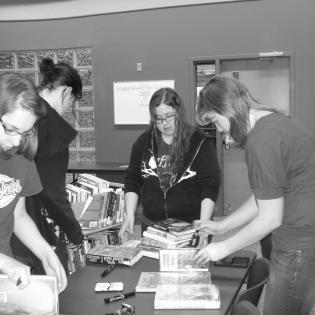Walk a Mile in My Moccasins
Using words of Native Peoples, youth explore examples of the philanthropic attitudes and traditions.
The learner will:
- define philanthropy.
- listen and compare giving traditions of different cultures.
- copies of Native American Scenarios handout
- One projected image of Graphic Metaphors
- (optional) copies of My Communities reflection
These graphics are metaphors for the philosophies of the people whose names are matched here:
- Thorpe - heart in hands
- Massey - bag/pouch
- Harris - shirt (i.e. the shirt off my back)
- Hill - grave
- Mankiller - interconnected rings
- Williams - key
- Coyhis – deer
Michael Ranken. Reproduction permitted provided source acknowledged. First published in Guildford Cathedral Papers, Autumn 1990.
Instructions
Anticipatory Set:
Print copies and give each participant one scenario from the handout Native American Scenarios. (Soon they will be grouped with the others who have the same scenario.) Display the graphic metaphors (see handout below) for all to see. Each one represents one of the scenarios.
Ask youth to read their scenario and decide which graphic represents their person's views. They should identify the giving customs and habits of this person and their community. Allow a few minutes for youth to read through their scenario a couple of times and take notes.
Move the individuals together into groups who have the same scenario. They discuss and take notes on the following:
- Which graphic represents our person and why itis a good representation? (Below are some notes for background.)
- What are the giving practices and reasons for their actions?
- How does this practice help the common good?
- What do they give up, and what is the impact?
- Thorpe (heart in hand) This graphic is used because the message is that people give unconditional love, giving from the heart with no expectation of return.
- Massey (bag/pouch) This graphic is used to represent a collection of little things which are given to any visitors. The collection represents your appreciation of the visit.
- Harris (shirt) This graphic is used to represent the idea that no material item is too sacred to give to someone else. Harris explains that any item admired by another should be given to that person. This exemplifies the cliché “shirt off your back.”
- Hill (grave) This graphic is used to represent the idea of the spirit. Hill explains that people are known or remembered for what they give and that giving is generosity of the spirit.
- Mankiller (interconnected rings) This graphic is used to represent the strong connection the Native people have to their tribes.
- Williams (key) This graphic is used to represent William’s idea that respect is the key element in teaching philanthropy.
- Coyhis (deer) This graphic is used to represent the Native tradition of “sharing the deer.” “Sharing the deer” is the idea that everything you have is shared with your community, as in a hunt when the game is shared among all members of the group.
Have a whole-group discussion of their findings to compare and contrast the beliefs, attitudes, symbolism, and impact.
Define the word philanthropy as "giving time, talent, or treasure and taking action for the common good." Every culture practices philanthropy in different ways. Talk about their own family/community practices, beliefs, and impact related to philanthropy.
Brainstorm generous actions they can take for the good of all that are sparked by the day's discussion.
The handout My Communities may serve as a personal reflection.
Philanthropy Framework
-
Strand PHIL.I Definitions of Philanthropy
-
Standard DP 01. Define Philanthropy
-
Benchmark MS.4 Give examples of how individuals have helped others.
-
-
-
Strand PHIL.II Philanthropy and Civil Society
-
Standard PCS 02. Diverse Cultures
-
Benchmark MS.1 Examine several examples of philanthropic traditions practiced in diverse cultures.
-
-
-
Strand PHIL.III Philanthropy and the Individual
-
Standard PI 01. Reasons for Individual Philanthropy
-
Benchmark MS.3 Identify and give examples of stewardship in cultural traditions around the world.
-
Benchmark MS.4 Identify and describe the actions of how citizens act for the common good.
-
Benchmark MS.9 Identify pro-social behavior in different cultures and traditions.
-
-
